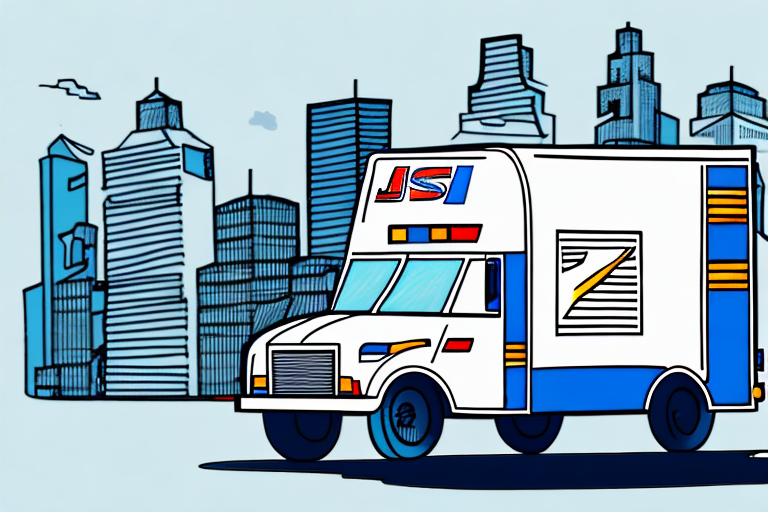Is USPS Reliable? A Comprehensive Review of the United States Postal Service
The United States Postal Service (USPS) is an iconic institution responsible for mail delivery across the nation. But how reliable is it in today's digital age? This comprehensive review explores the USPS's history, operations, financial health, modernization efforts, and its role in American society to determine its reliability for your mail delivery needs.
A Brief History of the USPS
The USPS is one of America’s oldest institutions, with origins tracing back to before the American Revolution. Established in 1792 by the Second Continental Congress as the United States Post Office Department, it has been pivotal in connecting the nation. Over the centuries, the USPS has navigated challenges like financial constraints and technological advancements, introducing services such as Priority Mail and expanding internationally.
Despite facing numerous obstacles, the USPS has continuously adapted, maintaining its status as a crucial component of American infrastructure by delivering mail to every corner of the country.
USPS’s Role in American Society
Economic Impact
The USPS is a significant economic player, employing over 600,000 individuals, making it one of the nation's largest employers. It supports various industries, including printing and advertising, by providing reliable and cost-effective direct mail services.
According to the Environmental Protection Agency, the USPS plays a role in reducing environmental impact by optimizing delivery routes and utilizing efficient transportation methods.
Community Connectivity
The USPS is vital in connecting communities, especially in rural areas where private carriers may not operate. It ensures that residents receive essential items, including medications and other necessities, thereby supporting the well-being of elderly and disabled individuals.
Moreover, the USPS offers services beyond mail delivery, such as PO boxes, money orders, and passport applications, catering to diverse needs of individuals, businesses, and government entities.
How USPS Operates: A Look Inside the Postal Service
The USPS operates an extensive network, processing and delivering billions of mail pieces annually. The workflow begins at numerous processing centers nationwide, where mail is sorted and then transported to local post offices for final delivery.
Customers can choose from various delivery options, including First-Class Mail, Priority Mail, and Express Mail. Additionally, the USPS provides online services such as package tracking and scheduling pickups, enhancing convenience for users.
Despite financial challenges, the USPS continues to innovate, ensuring efficient operations and expanding service offerings to meet customer demands.
The Postal Service’s Finances: Revenue and Expenses Explained
Financial Overview
The USPS operates as a self-funded entity, relying primarily on postage and service fees. However, it has faced persistent financial struggles. In 2021 reports, the USPS highlighted a net loss of approximately $9 billion.
Revenue sources include First-Class Mail, which has seen a decline with the rise of digital communication platforms. According to the U.S. Postal Service, mail volume has decreased by 4% annually over the past decade.
Expense Challenges
A significant financial burden is the requirement to pre-fund retiree health benefits, mandated by the Postal Accountability and Enhancement Act of 2006. This has resulted in billions of dollars in annual expenses, severely impacting the USPS's financial stability.
The USPS has been actively lobbying Congress for relief from this mandate, arguing that it places an unfair strain on its operations compared to other government agencies and private companies.
USPS’s Efforts to Modernize and Innovate
Service Expansion
To remain competitive, the USPS has expanded its package delivery services, directly challenging private carriers like FedEx and UPS. This move aligns with the surge in e-commerce, positioning the USPS to handle increased package volumes.
Partnerships with major retailers, including Amazon, have bolstered the USPS's role in the package delivery market.
Technological Advancements
The USPS has introduced technologies such as Informed Delivery, allowing customers to digitally preview incoming mail and packages. This innovation enhances user experience by providing greater transparency and tracking capabilities.
Additionally, the USPS is exploring the use of alternative fuel vehicles, including electric and hybrid trucks, to reduce its carbon footprint and promote sustainability. This initiative not only benefits the environment but also contributes to long-term cost savings.
Delivering in a Pandemic: How USPS Adapted to COVID-19
The COVID-19 pandemic posed unprecedented challenges, compelling the USPS to implement safety protocols like contactless delivery and social distancing measures for employees. Despite these efforts, there were instances of delays in mail delivery.
However, the USPS played a crucial role in ensuring the delivery of essential items, including medications and personal protective equipment. Notably, it processed over 129 million mail-in ballots for the 2020 election, facilitating safe and accessible voting during the pandemic.
Additional initiatives included providing free postcards to maintain social connections and offering discounts for businesses shipping essential goods, underscoring the USPS's commitment to serving the public in crisis.
Comparing USPS with Other Delivery Services: Pros and Cons
Advantages of USPS
- Nationwide Coverage: USPS delivers to every address in the United States, including remote and rural areas.
- Cost-Effective: Offers competitive rates for various mail and package services.
- Diverse Services: Provides options like Priority Mail, First-Class Mail, and Media Mail, catering to different needs.
Challenges Compared to Private Carriers
- Delivery Speed: Private carriers like FedEx and UPS often provide faster overnight delivery options.
- Reliability: Private companies may offer more consistent delivery times for certain types of shipments.
- Tracking and Technology: While USPS offers tracking, private carriers typically provide more advanced tracking features.
Choosing between USPS and private carriers depends on specific needs, such as delivery speed, cost, and coverage area.
Issues Facing the Postal Service: Funding, Politics, and More
Political Challenges
The USPS has been subject to political interference, particularly regarding funding and operational autonomy. In 2020, attempts were made to restrict funding, highlighting the political vulnerabilities of the organization.
Declining Revenue
The rise of digital communication has led to a steady decline in traditional mail volume, adversely affecting USPS revenues. Adapting to this trend is crucial for the organization's sustainability.
Modernization Efforts
In response to these challenges, the USPS is exploring modernization strategies, including service diversification and technological enhancements to better meet customer demands and improve financial health.
Public Perception of USPS: Survey Results and Feedback
Public opinion on the USPS is mixed. Surveys indicate that a majority of Americans trust the USPS for reliable mail delivery. However, there is a growing inclination towards private carriers for specific needs, driven by concerns over delays and service consistency.
Continuous efforts to improve service quality and adapt to changing consumer preferences are essential for maintaining and enhancing public trust in the USPS.
The Future of the United States Postal Service
The USPS faces a challenging future with declining traditional mail revenues and the need to modernize its operations. However, its established infrastructure and ongoing innovations position it well to adapt to new market demands.
The expansion into the package delivery market aligned with the e-commerce boom presents significant growth opportunities. By leveraging partnerships and investing in efficient delivery systems, the USPS can enhance its competitiveness and financial stability.
Additionally, embracing sustainable practices and advanced technologies will be pivotal in ensuring the USPS remains a vital and reliable institution in American society.
Conclusion: Is USPS Reliable? Our Final Verdict
Is USPS reliable? The answer is multifaceted. While the USPS faces challenges such as financial constraints and increasing competition from private carriers, it remains a dependable option for mail delivery across the United States.
The USPS’s extensive network of over 31,000 post offices and 600,000 employees enables it to reach every address, including those in remote areas. Services like Priority Mail, express options, and comprehensive tracking add to its reliability, catering to a wide range of customer needs.
Ultimately, the USPS continues to be an integral part of American life, adapting to modern demands while maintaining its foundational role in connecting communities nationwide.




















